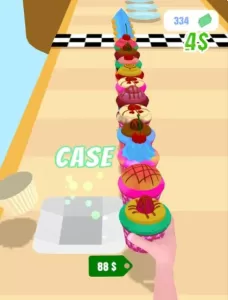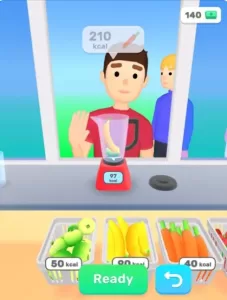Can a Hyper Casual studio make Games?
I put this provocative headline on purpose. Because, as a studio with a hyper-casual background, this is the question that we were exposed to, either implicitly or explicitly. There is no need to repeat the question “Is hyper-casual a game or a business model?”. It has already been written, talked about, and discussed thousands of times. Here, perhaps, I can briefly convey my own opinion and continue my writing.
Note: I will mostly refer to Hyper Casual as HC and the rest of the games as Game for the rest of the article.
Is Hyper Casual a game genre?
I actually see the Hyper Casual, as a playable trending content. It is like a trending video on youtube or on TikTok but it is interactive so it gives developer a chance to earn money by ads as long as they keep the player in content. In this sense, it is both a business model and a game. In other words, it consists of content that is consumed fast, such as youtube, TikTok, and Instagram reels. Its basis is mostly based on market trends and its purpose is to keep the user more active and consume more advertisements. But because they are consumed so quickly, they need constant and rapid evolution, new trends, just like their video counterparts.
How did HC become so popular?
The answer is simple; because it is relatively easy to produce and easy to consume. And perhaps from the development side, the other most important reason for this popularity is that publishers started working with PPP, “Payment per prototype” model. While this prototype fee issue did as much harm as good to the market, I think the benefits portion was much greater. A lot of irrelevant people flooded the market (just to make money over PPP, with no interest in making a better game), but at least it created awareness and helped make a concept like game development one of the most popular professions for young people today in many developing countries (like Turkiye).


“So, We are a Hyper Casual Studio and yea..”
Now let’s get to our main issue. You are/were an HC studio. You had your share of the market’s last negative change wind and the publisher cancelled the contract. If you have an investor, he gave you a while, but the number of publishers you can contract is limited, most of them are already just trying to get more free prototypes with ridiculous expectations and promises.
To be frank, the market was already very difficult recently. While it was 1 hit possibility in X games 2 years ago, it turned out 1 hit in 2X games after a year, this figure later exceeded even the estimates.
With the recent Google and Apple ads policy updates, the ad-based games market has already gotten into trouble.
By the way, with the difficult market conditions, nowadays HC market have also changed a lot recently and content turned into idle’ish, hybrid-casual’ish games. The HC I’m talking about here is the traditional HC method.
If you won’t make HC, so what?
If I’m talking about you in the definition above, I think you should gradually start shifting your focus to the Game development. Hybrid-Casual, Casual, Mid-core, whatever the genre, now establish your vision of being a Game development studio. As a Game studio, you will more focus on sustainability and stability. No more 2 weeks to develop, 3rd week to kill it. You will have more time to develop, test and you need to treat your game like a gold bracelet with a neat work while monitoring the metrics.
In the transition from Hyper Casual, you need to make some structural changes in your studio. While you were developing Hyper Casual, if your team had 5 Unity developers, you could develop 5 games at the same time. First of all, this will change, and multiple people will now focus on a single game. Therefore, it will be necessary to build a team and learn to be a team. During HC, you have seen who in the team is better at design and who is on software. In the new structure, it is necessary to place people in the right positions.
We said, team. So now there are some friends that you need to choose from among current or add new people to the team.
"In the transition from Hyper Casual, you need to make some structural changes in your studio."
Structural changes in the studio
Game Designer: :In Hyper Casual, usually the idea comes from you or the publisher. But since it was in the prototype stage, the game design was working on a jointly agreed trial method in order to see if that mechanic works or not. This will change as you develop the Game. You need someone who plans the game from the beginning to the end and this person needs to think carefully to make it more fun and longer playable.
3D Artist: While making Hyper Casual, the game mechanics were in the foreground, so using of assets was intense. Modelling extra assets was rarely necessary, but although you can use assets while making the Game, you will need to model, modify, construct most assets according to the Game. Especially if you want to go with Hybrid-Casual, you will definitely need a good 3D Artist.
2D Game Artist / Graphics Artist: Hyper Casual, although the visual quality was important, it wasn’t exactly one of the key elements. Because of testing the prototype, publishers usually preferred not to touch too much when a good CPI result is achieved and it caused a lot of very primitive looking hit games. But it is a bit different in the Game. Visual quality is very important even in the prototype. So, you need a good artist. If you have the opportunity, you need to find another person to do UI designs or you can try it with Graphics Artist in the beginning.
Level Designer: The game you make must go in a certain linear line, neither too hard nor too easy, without boring the player. A level designer is required at this stage. If you decide to make a puzzle-type game, a game/level designer with experience in puzzle-making is a must.
Project Manager: Unlike Hyper Casual, since multiple people will work on a single project while making the Game, a project manager who monitors the entire team and the progress of the project with an outside eye is one of the sines qua non of the team.
If your game is animation-heavy, you will also need an Animator. (If you are a small studio, at first you can request this from the 3D artist if he is more likely 3D Generalist or use ready-made animations).
Sound is very important. At first, you can go with ready-made sound packages, but set up the people/companies you will receive support from in the future.
As it can be understood, the difference between making a Game from Hyper Casual is that it requires multiple people to work on the same project and it is much more difficult to do alone than HC.
So, can a studio switching from Hyper Casual make a Game? Answer: Yes, as soon as they learn to be a team, they can, and in a very good way.


Comment(01)